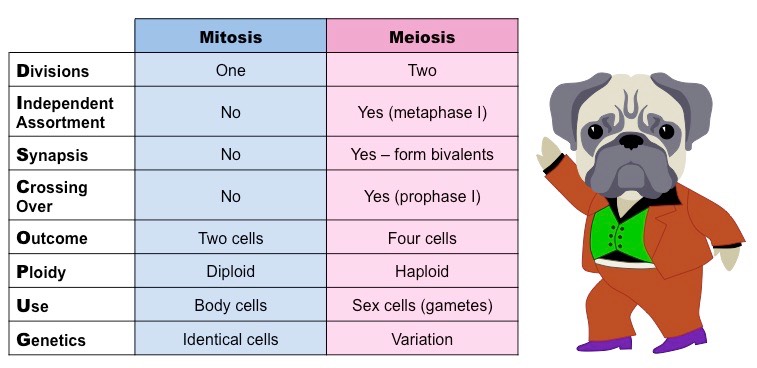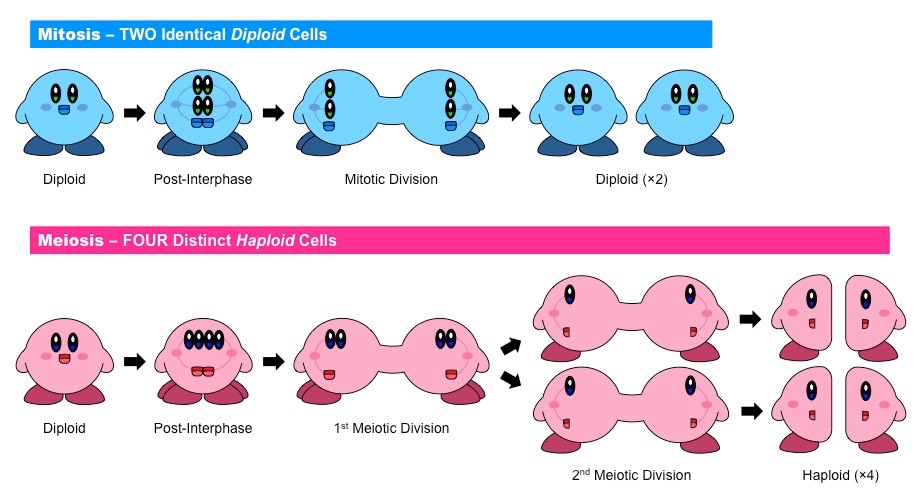Mitosis and meiosis are two processes by which eukaryotic cells may divide and share several similarities:
- They are both preceded by interphase (which includes DNA replication)
- They both divide according to a common pathway (prophase → metaphase → anaphase → telophase)
- They both split their cells via cytokinesis
However there are certain key differences which distinguish the two processes:
- Division – Mitosis involves only one cell division, but meiosis requires two cell divisions
- Independent assortment – Homologous pairs are randomly separated into separate cells in meiosis, but not mitosis
- Synapsis – Homologous pairs form bivalents in meiosis, but not mitosis
- Crossing over – Non-sister chromatids of homologous pairs may exchange genetic material in meiosis, but not mitosis
- Outcome – Mitosis results in the formation of two daughter cells, while meiosis produces four daughter cells
- Ploidy – Daughter cells produced by mitosis are diploid, while daughter cells produced by meiosis are haploid
- Use – Mitosis is used to clone body cells, while meiosis is used to generate sex cells (gametes)
- Genetics – Cells produced by mitosis are genetically identical (clones), while cells produced by meiosis are genetically distinct
Mnemonic: Disco Pug
Mitosis versus Meiosis

Kirby Genetics #1: Mitosis versus Meiosis

